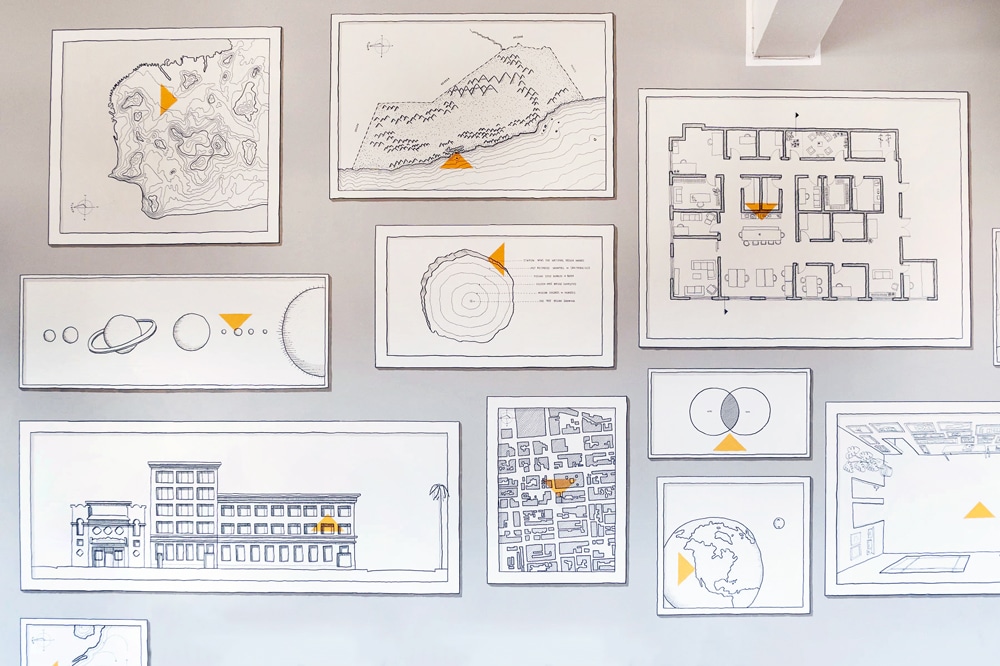We’re often told that utility comes before beauty. That practicality is more important than, and antecedent to, delight. Delight and fun and all that frilly stuff is something that happens after the serious hard core responsible work is done.
At Stamen we don’t think that way. It’s also not how the history of the world runs. In our work, utility and beauty share an equal footing. They don’t compete with one another; they support each other.

We are a data visualization and cartography design studio, based in the Mission District of San Francisco and founded by Eric Rodenbeck in 2001.
At our core, we are committed to expanding our understanding through research. We view every engagement as an opportunity for invention and discovery. Stamen is a place where hard work is valued, where good ideas can come from anywhere, and where results are paramount.
Our practice revolves around our people. We are a close-knit group of design technologists, product designers, and artists who genuinely enjoy collaborating with one another. Meet our team ➤
Our work is highly impactful and often newsworthy. We are a recipient of the National Design Award for Interaction Design from the Smithsonian Museum. Our work has been shown in museums worldwide, including the Museum of Modern Art, The Cooper Hewitt Smithsonian, the Victoria & Albert Museum, the Shanghai Power Station of Art, and the San Francisco Museum of Modern Art. Read more of our press ➤
Our Clients
Working with clients to realize their complex data-oriented ideas is our business. We take pride in bringing our award-winning and impactful work to clients who span a broad range of industries across both private and public sectors.







































For example, there’s this notion that agriculture came first, and that flower gardens came after, once people’s basic food needs were met. But there’s ample archeological evidence that the order was actually reversed. Robert Pogue Harrison, in Gardens: An Essay on the Human Condition, talks about how, since domestication comes to fruition only after several generations, the first gardens must have had to have “more to do with enchantment than procurement,” an idea we love here at Stamen. People seem to have cultivated small gardens for flowers and psychedelics first and the idea for farming happened after people were making themselves pretty and getting high. Beauty came first.
There’s also this idea that beer was an accidental byproduct of the bread making process; a fun little thing that people discovered after doing the serious work of baking bread. It turns out that people were making beer very intentionally, and there’s a growing body of evidence that bread sort of falls off the truck of the beer making process.
Science is also beginning to tell us beauty plays a significant role in natural selection, much more than mere frippery. The peahen doesn’t just think the peacock’s tail is evidence that he’s strong and fit; she also thinks he’s hot. Some scientists think that dinosaur feathers but started as ornamental displays that eventually found a more pragmatic use in helping the lizards get around faster.
So for us, beauty isn’t something that comes after utility. It’s a core part of the work we do. We don’t build first and then design after. We don’t engineer first and then decorate afterwards. Both these activities take place at the same time, they’re both given equal importance, resources, and attention.
There’s nothing efficient about the way a cherry tree produces a show of blossoms in the spring and drops them all over the ground. But there’s something very effective about it. We want to be more effective than we are efficient. I got this idea from Cradle to Cradle by William McDonaugh and Michael Braungart and it’s guided my thinking since I read it. My friend Josh Draper gave me the great gift of saying that Stamen is serious, like a flower is serious. A flower is resolutely, relentlessly, amazingly (did you know they emit heat that the bees can see?) committed to getting fertilized by a bee and will do everything it can to be as beautiful as it can. There’s something about a radical commitment to beauty as an essential part of data-drive communication that I love. It’s why we do what we do.
—Eric Rodenbeck, Founder
